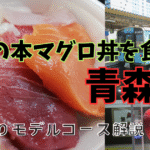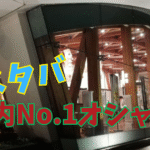Moumou, not just an exceptional food connoisseur but also a traveler who has visited over 40 prefectures in Japan, reveals his meticulously planned journey and unexpected adventures.
“Travel with companions, be compassionate to others, and cast away momentary embarrassment.”
Today we’re exploring Sasebo, a city with a distinct foreign atmosphere.
This city is Japan’s Barcelona—or is it?
And I even encountered pitch-black curry.
So I descended upon Sasebo, the westernmost part of Japan.
If you read this to the end, you too can enjoy European culture while remaining in Japan.
Now, let’s head to Sasebo!
Departing from Kurume Station
I had established my base in Kurume. Well, to be precise, I was staying in Yame, a town famous for its tea.
Needless to say, I came all the way from Tokyo to Fukuoka using only the Shinkansen and local trains.
While others naturally fly over in an airplane, I have the pride of a traveler and take the railway to savor the journey atmosphere.
It’s certainly not because I’m afraid of flying!
I chose Yame, famous for its tea, as my lodging.
I don’t know much about tea, but it was a pleasantly drinkable “typical Japanese tea.”
I stayed there because of work obligations.
Now, to get to Nagasaki Prefecture from Yame, I needed to take a bus to Kurume Station, which wasn’t just a 5 or 10-minute ride. It took quite a long bus ride to finally reach Kurume Station—50 minutes to be exact. Let me emphasize: a 50-minute bus ride to Kurume Station.
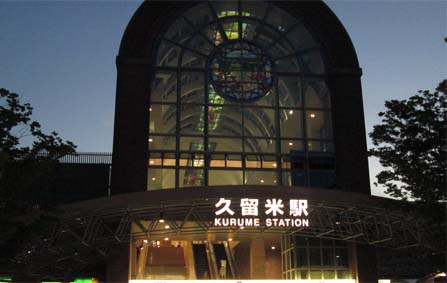
I was already feeling somewhat tired at this point.
Since there weren’t many restaurants in the area, I was truly grateful for this place.
I forgot to take a photo of the station during the day, so this is a night shot, but this is generally what the station looks like.
There’s a rotary in front of the station that serves as a taxi stand and bus terminal.
Is it just me who feels a hint of foreign ambiance from the station’s stained glass?
How to get from Kurume Station to Sasebo Station?
Let me reveal my itinerary from Kurume to Nagasaki:
STEP 1: From Kurume to Tosu
- Kurume Station
- Kagoshima Main Line
- 8 minutes to Tosu Station
- ¥1,850 to Nagasaki Station without using express trains *Note: Some stations might not accept IC cards, so be careful
STEP 2: From Tosu to Sasebo Station
- Limited Express Midori
- About 1.5 hours from Tosu Station to Nagasaki Station
- Express fare + reserved seat fee applies
STEP 3: Sasebo Station
- Final Destination
- Sasebo Station
It’s quite a distance from Kurume to Nagasaki—2.5 hours!
For those looking to save on transportation costs, you could take the green-faced Sasebo Line from Kohoku to Haiki Station (apparently pronounced “Haiki”), then take the black-faced Seaside Liner to Sasebo, but that takes about 3 hours.
Using the limited express only saves 30 minutes—whether that time difference is worth it or not is up to you.
JR Kyushu trains are all so stylish!
I arrived at Tosu from Kurume as planned.
You can see Sagan Tosu’s home ground from the station.
Even though I’m not a Sagan supporter, it’s somehow exciting.
Oh, there’s the “Yufuin no Mori” train! That’s nice—I’d like to ride it someday. How moving!
Let me clarify that I’m not a railway enthusiast.
But after traveling all around the country, I’ve started to wonder if I might have a slight tendency toward being a train enthusiast these days. How have you been?
I board the Midori limited express from Tosu as planned.
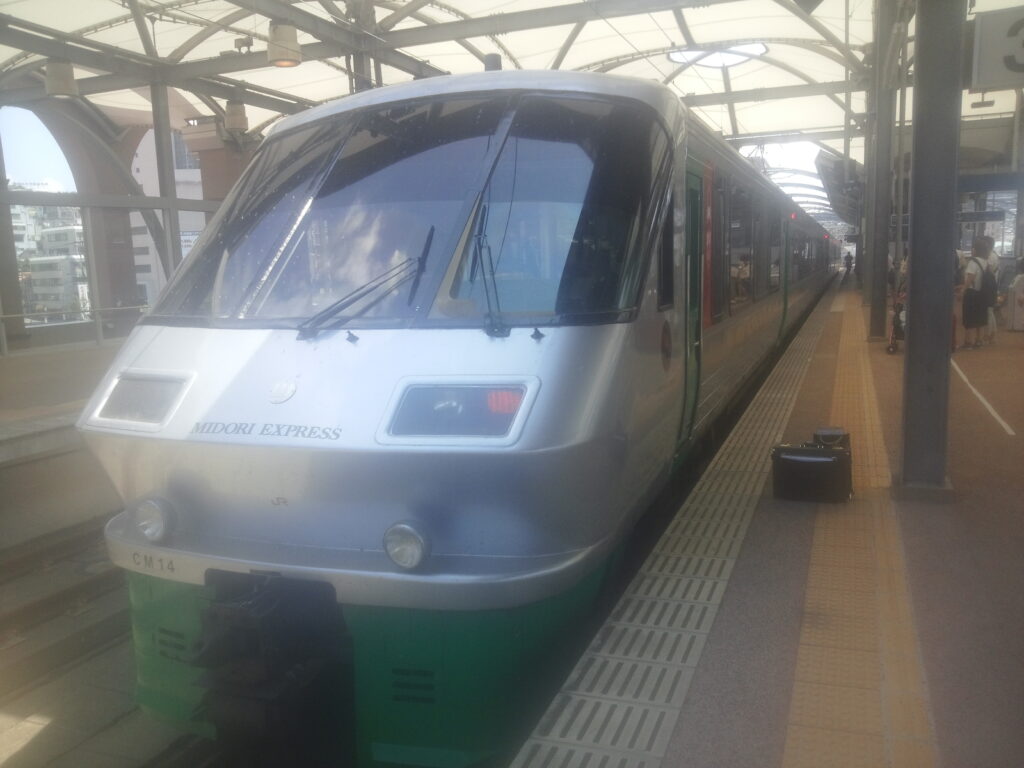
Here I encountered various train models and frantically snapped photos.
The reason I had so much time to take photos was that there was a 30+ minute wait for the Midori train.
My God! What am I supposed to do at this station for more than 30 minutes?
I have no choice but to keep taking photos of trains.
It’s not that I’m an enthusiast, really.
However, there wasn’t a single person around taking photos of train cars.
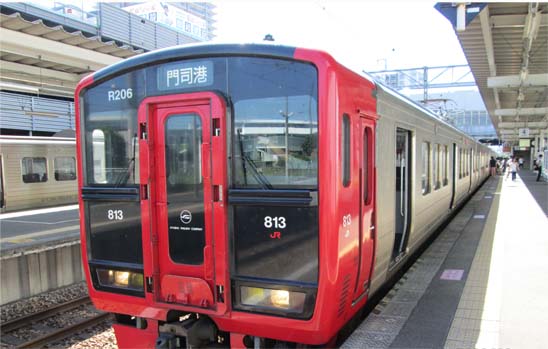

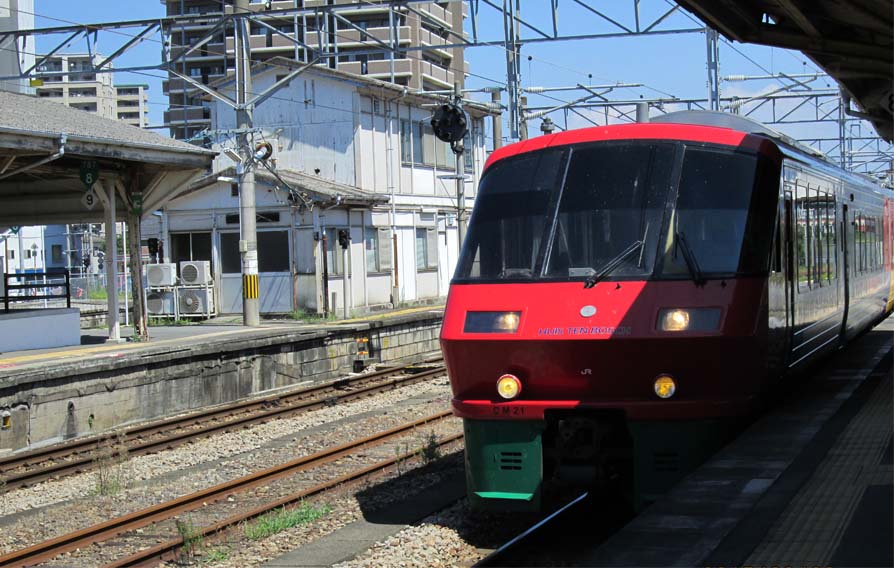
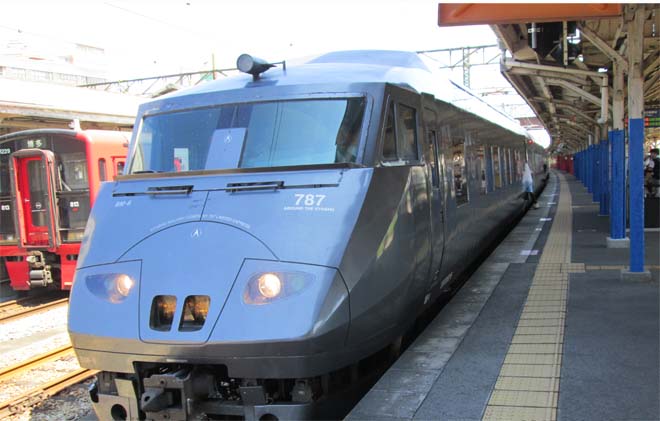
And with so many unfamiliar train models, I started to get confused about which one I needed to board.
Everyone, please be careful with this.
Eventually, the limited express entered the station. Finally, that was long!
The view from the train window revealed peaceful rural landscapes.
Occasionally we crossed large rivers with structures that looked perfect for bass fishing, making me want to grab a rod and get off the train.
Nagasaki was sunny today
I finally arrived at my long-awaited destination, Sasebo.
Well, it was more that I wanted to visit Nagasaki Prefecture.
It’s not that I particularly wanted to go to Sasebo, but there wasn’t much that caught my interest around Nagasaki Station, so I was wondering what to do when the Sasebo option bubbled up.
Sasebo is famous for its burgers and “sara-udon” (plate noodles), but my interest lay elsewhere.
(sigh) Finally arrived in Sasebo.
Hmm, I see.
I didn’t know until I arrived, but apparently, I’ve become the cow that reached the westernmost point. I’m honored.
Looking around, I noticed the Matsuura Railway that goes to Hirado and Imari.
Hirado is famous for its fishing spots for “hechinu” (spotfin croaker), and Imari is naturally known for its pottery.
I’m amazed at the overwhelming power of this small train that goes so far.
Looking at Imari porcelain, you can easily imagine how Sasebo culture was built through Nanban (Southern Barbarian) cultural influences and trade with Portugal via the Red Seal ships at Hirado and Dejima—or at least I think you might be able to.
If I remember correctly, on the left side after exiting Sasebo Station, there was a three-story shopping center with restaurants, and somehow it had a subtle hint of cross-cultural aroma. Or was that just my imagination?
I checked out a music store.
Just browsing, of course.
I can’t recall anyone other than Snufkin who would carry a guitar on a journey.
I’ve seen many stations across Japan.
That’s because I don’t use airplanes and travel by land to all places except Hokkaido and Okinawa.
Let me emphasize again that it’s not because I’m afraid of flying!
I believe trains are the best way to experience the feeling of travel. Really!
That’s why I take trains whether I’m going to Kyushu or Shikoku. That’s my evidence.
Not just Sasebo, but perhaps all of Nagasaki has this interesting cross-cultural communication in its townscape.
You won’t see crosses on rooftops even at Nikolai Cathedral in Tokyo.
Anyone would believe this was taken in Spain.
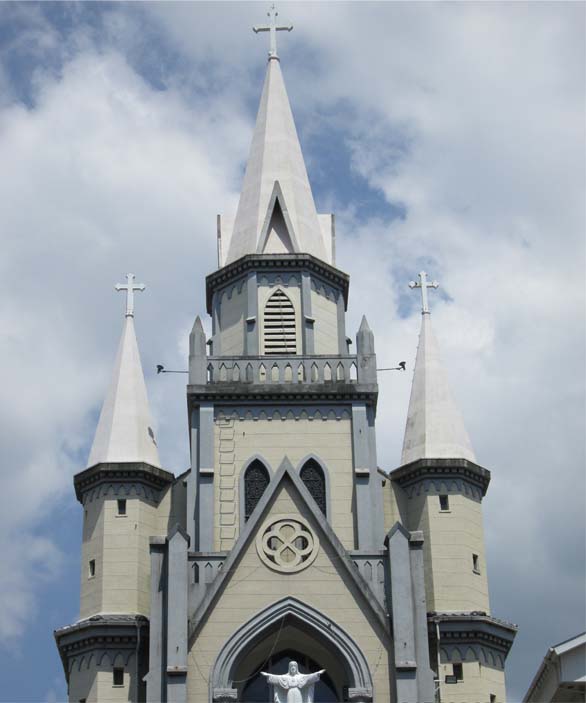
That’s why I (only I) call it the Barcelona of Japan. Or the Lisbon of Japan.
I haven’t been to either place.
Have you ever eaten pitch-black curry?
Well, I was getting hungry.
There was a sara-udon restaurant right after getting off at Sasebo Station.
I was looking at the menu outside—¥800.
The price was fine, but I was surprised by the portion size.
“Huh, is the default serving for two people? This might be a bit much for one person.”
I agonized for 7 minutes in front of the store.
Next to the menu were autographs and smiling photos of celebrities, and those photos seemed to be asking me, “Hey, what are you going to do?”
Various celebrities’ photos suggested “I ate here too.” It seems some big-name celebrities have visited.
Who they were, I’ll leave as a surprise for when you visit (W.A.)
Enter the pitch-black curry! But I broke away from those smiling photos and decided to walk down the main street to another targeted restaurant.
That was a curry shop called “Black.”
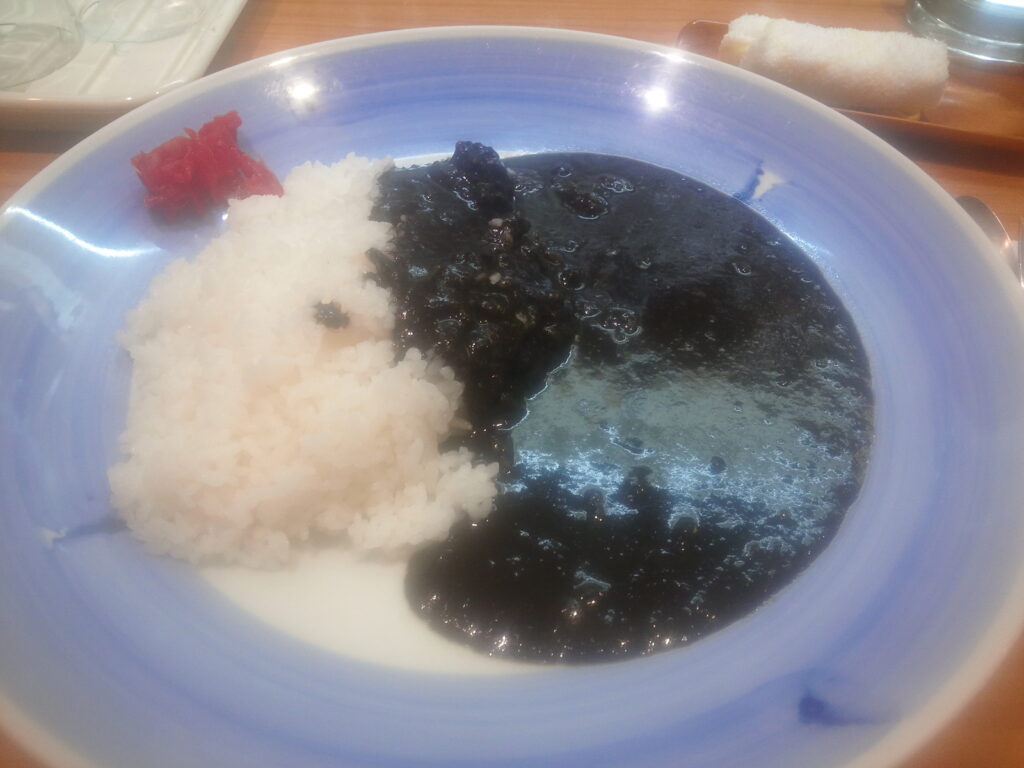
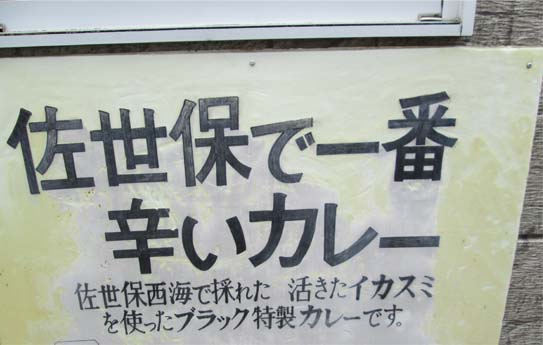
Apparently, they serve pitch-black curry made with squid ink. Black?
You probably think of curry as brown or green, right? I do too.
That’s why black? I had to try it!
I arrived. Hm!? There’s something written here.
Oh, looks good. Let’s go in.
The prices were enviably reasonable compared to Tokyo.
Of course, with the recent inflation, prices might have increased, so please check if you go.
I ordered the Black Curry Set.
Black Curry Squid ink black curry Wow, it’s pitch black! It doesn’t look spicy, but is it?
I took a bite. Hm? It’s not spicy.
Or so I thought, but then a Blamayo-style spiciness gradually crept up on me.
Hmm, this spiciness could become addictive.
Not bad—actually, it’s good!
The proprietress of the shop was friendly. Apparently, they have a time challenge here.
If you can eat 5 plates without water in 20 minutes, it’s free. No bathroom breaks allowed.
The initial salad must also be finished.
Disqualified for spitting out.
No complaining.
No saying it’s spicy—these and other iron-clad village rules are in place.
I wasn’t interested in eating a lot to get it for free, as I’m the type who enjoys the taste, so I didn’t think much of it, but out of curiosity, I asked the proprietress:
Moumou: “Um, do people actually participate in this time race?”
Shop person: “Yes, quite a few do.”
Moumou: “Do they finish it?”
Shop person: “It’s very spicy, so some people give up.”
Moumou: “That spicy, huh? Well, this one is pretty spicy, so it must be really spicy?”
Moumou: “Is it really that spicy?”
Shop person: “It’s many times spicier than what you’re eating now.”
Moumou: “I see! The power of squid ink!”
Shop person: “Where are you from?”
Moumou: “I’m from Tokyo. I’m an exceptional gourmand and traveler.”
Shop person: “What!? You came all the way from Tokyo?”
Moumou: “Well, I came here for work and heard rumors about unusual black curry, so I decided to check it out. But it’s probably rare for someone to come even from Kurume, taking 2.5 hours, isn’t it?”
Shop person: “Ah, I see. How do you like Sasebo?”
Moumou: “I’m impressed by the encounter with the blooming exotic atmosphere of the townscape and food culture—it’s a wonderful city that has greatly stimulated me.”
Shop person: “That’s good. Please take your time.”
It’s a very friendly and pleasant shop.
Blending into Sasebo, with a side trip to Saga
After leaving the restaurant, I wandered through Sasebo’s arcade in search of a coffee break, completely transforming into a (fake) Sasebo citizen, blending into the city.
Then I enjoyed an iced café au lait at the standard Doutor coffee shop, truly realizing I was in Sasebo.
As I was leaving Sasebo, I suddenly thought that since I’ve come this far, I might as well stop by Saga Station—a thought that came on an auspicious day.
STEP 1: Sasebo Station
- Limited Express Midori bound for Hakata
- ¥2,310 to Saga
STEP 2: Haiki Station
- No need to get off
STEP 3: Saga Station
- Final Destination
Arrived. Quite tired.
Now, let’s see what Saga has to offer.
At first glance, it doesn’t seem to have much.
It seems rather deserted. Is it going to be okay?
I walk around Saga Station for a while.
Just walking.
Of course, walking.
Wait, there’s nothing here. Doesn’t the Shinkansen stop at this station? Oh my…
But feeling awkward about returning empty-handed, I bought some “Umatou Saga Beef” as a souvenir for myself.
In retrospect, it was a completely unnecessary expense, but travel tends to remove such limits, so everyone should be careful about this (wasn’t this a business trip?).
As an aside, I completely forgot I even bought this souvenir and tragically threw it away unopened after it magnificently passed its expiration date—please keep this to yourselves.
I call this “The Tragedy of Saga Beef,” borrowing from the “Tragedy of Doha.”
And if you happen to eat it, I’d secretly like to know how delicious it might have been.
I somehow made it back to Kurume Station.
But this isn’t the end.
From here, I’m heading to Taihou Ramen Main Store in Kurume, which I’d wanted to visit.
I take a bus aiming for the ramen shop.
I had eaten Taihou once at the Shin-Yokohama Ramen Museum, so I knew of its existence and thought I’d check it out since I was here.
The phrase “since I’m here” or “since I’ve come this far” is a common travel situation that reveals one’s personality, I think.
- “Since I’m here, let’s see as much as possible” type
- “Since we’re away from our daily lives, let’s relax at the hotel” type
I definitely, unquestionably fall only into pattern 1.
I headed for Taihou Ramen Main Store.
Although I was quite exhausted, I had slept well on the Midori train, so I had at least some dopamine-induced energy.
Mmm, delicious.
The original location is indeed different.
This might be heavily influenced by the atmosphere, but let’s not touch on that as a travel memory.
Today’s reflection meeting
And then I boarded the Kyushu Shinkansen heading from Kyushu to Honshu.
Inside the train, looking at the rural landscape spreading outside the window, I held a one-person reflection meeting.
By the way, this Kyushu Shinkansen has incredibly good seats with a luxurious comfort, so I recommend traveling around Kyushu by Shinkansen rather than airplane.
From Fukuoka to Nagasaki to Saga, I had a whirlwind tour that gave me many good experiences and let me enjoy local delicacies, making it a day that left a strong impression.
I’ve been to over 40 prefectures in Japan, but Sasebo ranks in my top 3 most memorable trips, I reflected (though I was here for work).
However, thinking about the 5-hour seated journey home that awaits, even the station bento to eat on the train becomes somewhat dispiriting.
Well, such is life.
Everyone, have a nice trip!
投稿者プロフィール

